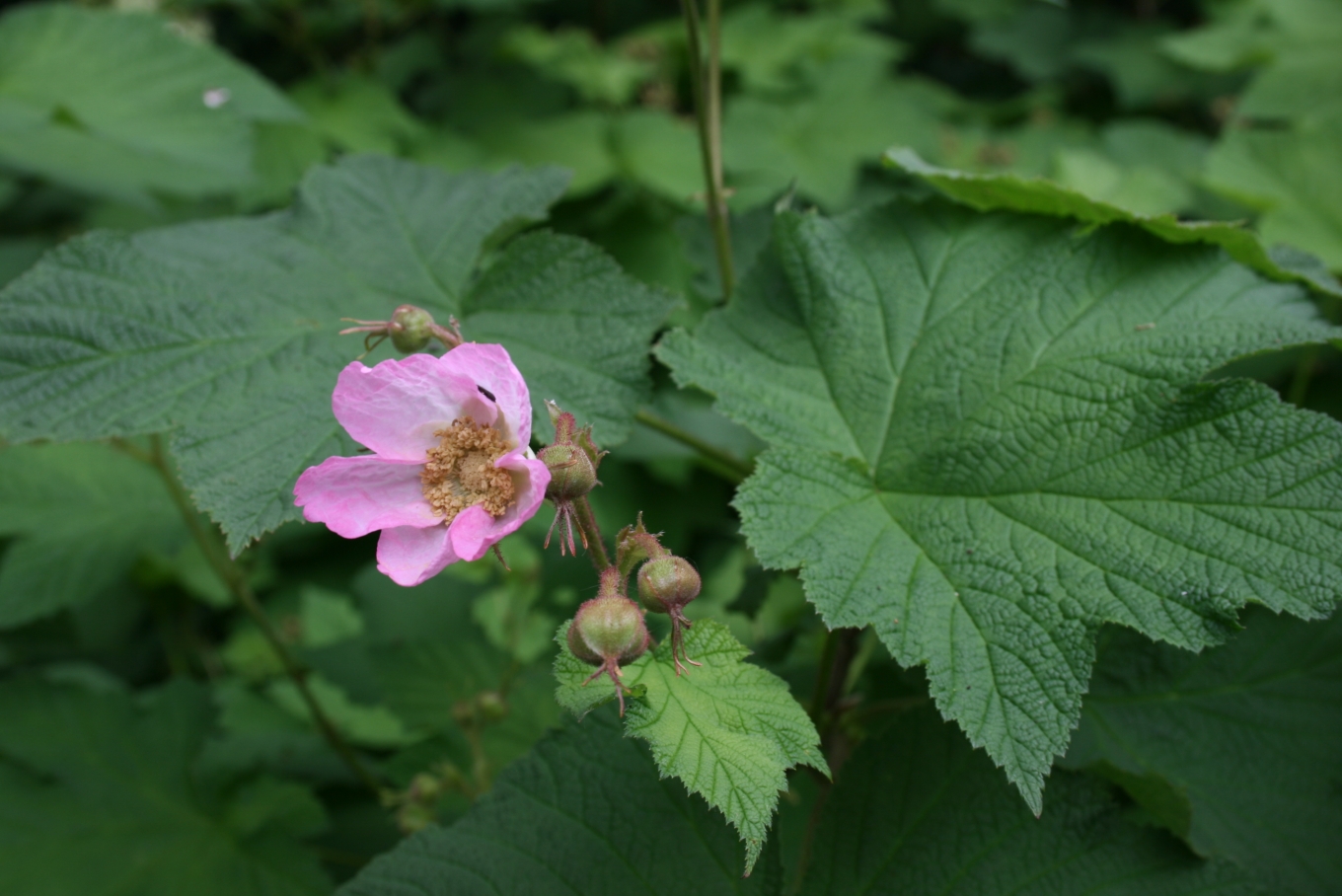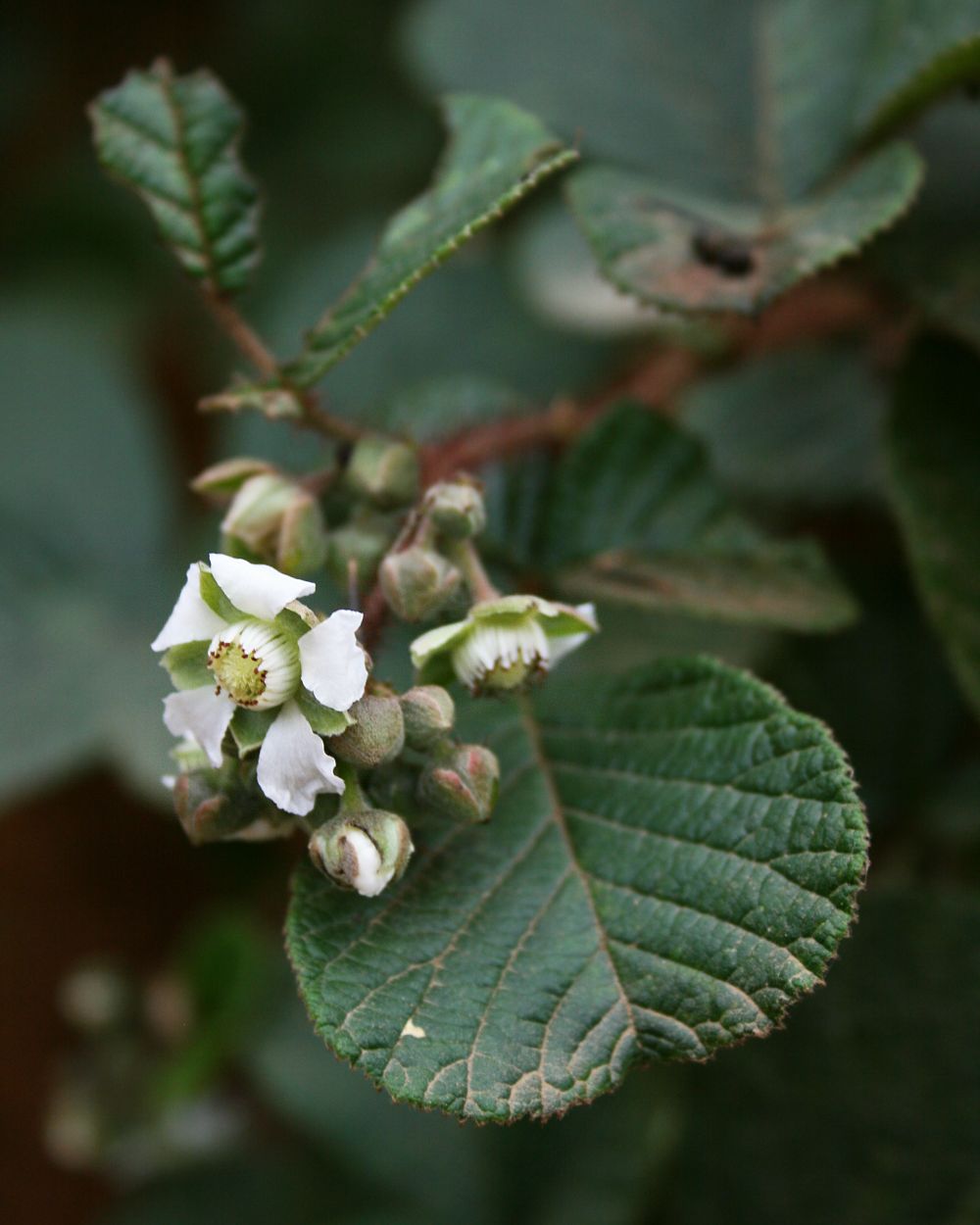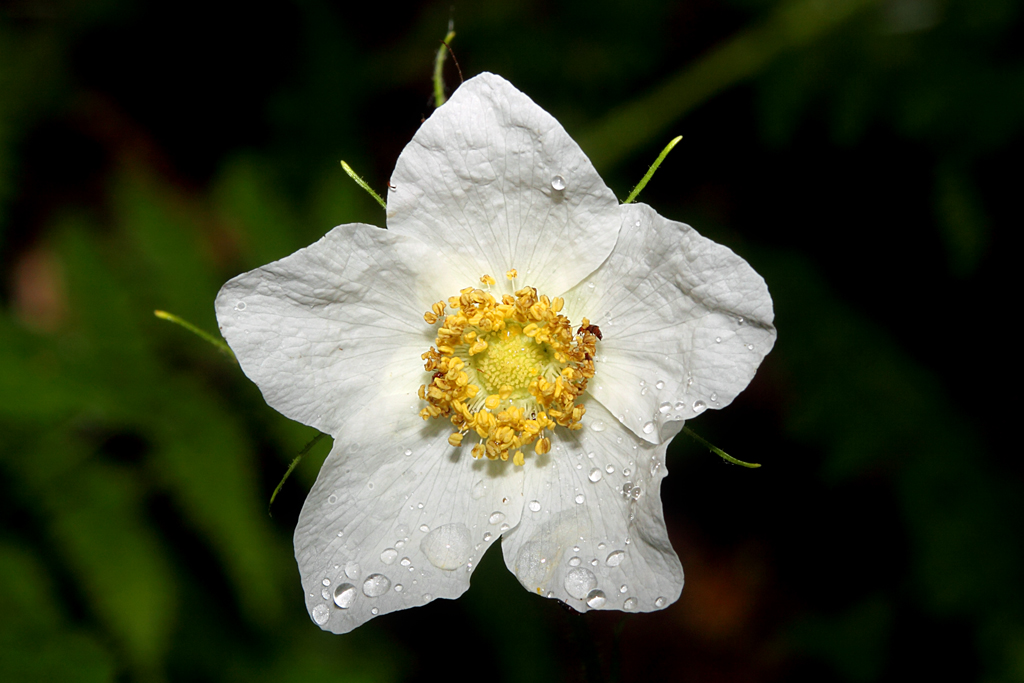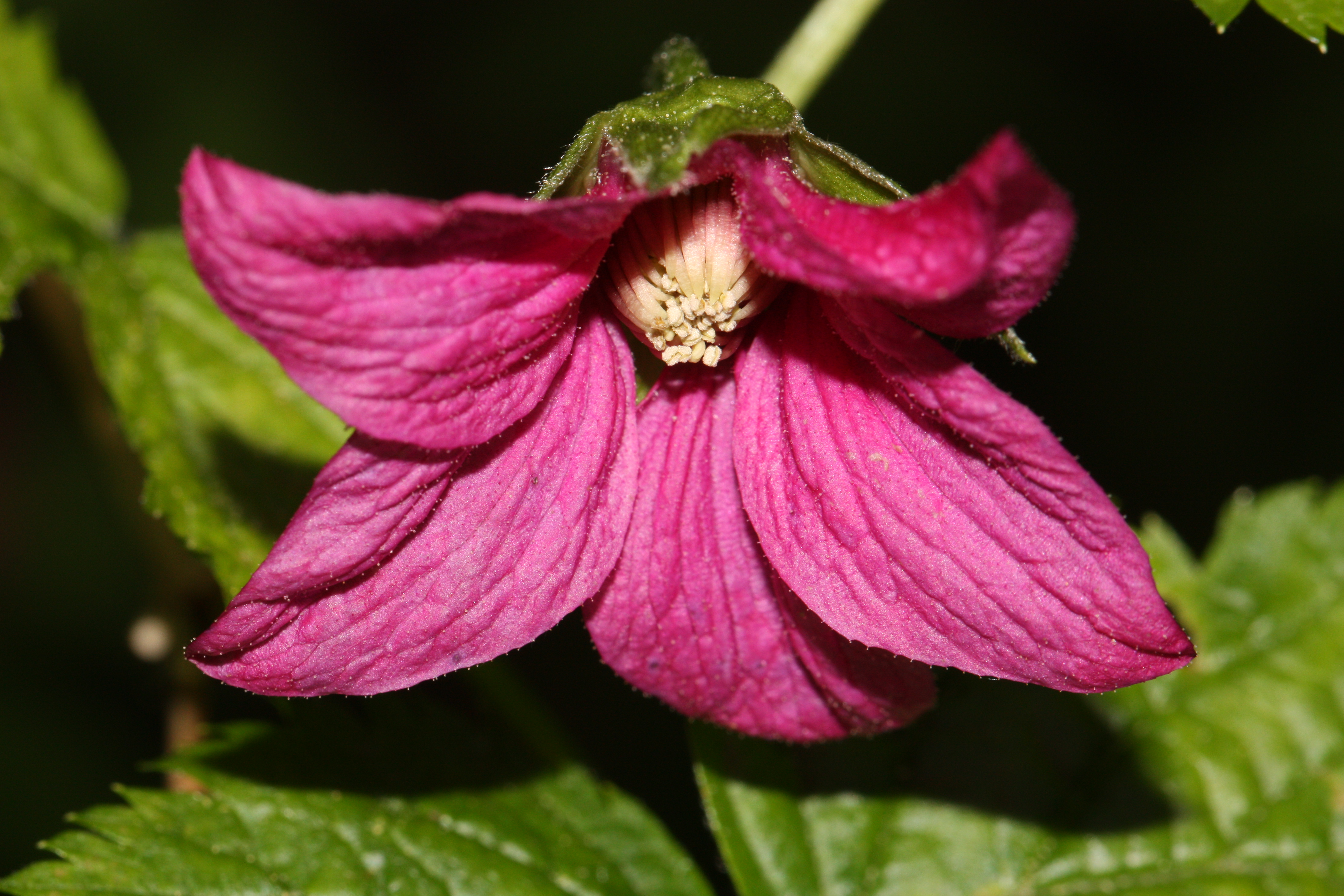Rubus on:
[Wikipedia]
[Google]
[Amazon]
''Rubus'' is a large and diverse

















 Better-known species of ''Rubus'' include:
*''
Better-known species of ''Rubus'' include:
*''
''Rubus''
at the
genus
Genus ( plural genera ) is a taxonomic rank used in the biological classification of living and fossil organisms as well as viruses. In the hierarchy of biological classification, genus comes above species and below family. In binomial n ...
of flowering plants in the rose family, Rosaceae, subfamily Rosoideae, with over 1,350 species.
Raspberries, blackberries, and dewberries are common, widely distributed members of the genus. Most of these plants have woody stems with prickles like roses; spines, bristles, and gland-tipped hairs are also common in the genus. The ''Rubus'' fruit
In botany, a fruit is the seed-bearing structure in flowering plants that is formed from the ovary after flowering.
Fruits are the means by which flowering plants (also known as angiosperms) disseminate their seeds. Edible fruits in partic ...
, sometimes called a bramble fruit, is an aggregate
Aggregate or aggregates may refer to:
Computing and mathematics
* collection of objects that are bound together by a root entity, otherwise known as an aggregate root. The aggregate root guarantees the consistency of changes being made within the ...
of drupelets. The term "cane fruit" or "cane berry" applies to any ''Rubus'' species or hybrid which is commonly grown with supports such as wires or canes, including raspberries, blackberries, and hybrids such as loganberry, boysenberry, marionberry and tayberry. The stems of such plants are also referred to as canes.
Description
Mostspecies
In biology, a species is the basic unit of Taxonomy (biology), classification and a taxonomic rank of an organism, as well as a unit of biodiversity. A species is often defined as the largest group of organisms in which any two individuals of ...
in the genus
Genus ( plural genera ) is a taxonomic rank used in the biological classification of living and fossil organisms as well as viruses. In the hierarchy of biological classification, genus comes above species and below family. In binomial n ...
are hermaphrodites, '' Rubus chamaemorus'' being an exception.
''Rubus'' species have a basic chromosome number of seven. Polyploidy
Polyploidy is a condition in which the cells of an organism have more than one pair of (homologous) chromosomes. Most species whose cells have nuclei (eukaryotes) are diploid, meaning they have two sets of chromosomes, where each set contains ...
from the diploid
Ploidy () is the number of complete sets of chromosomes in a cell, and hence the number of possible alleles for autosomal and pseudoautosomal genes. Sets of chromosomes refer to the number of maternal and paternal chromosome copies, respecti ...
(14 chromosomes) to the tetradecaploid (98 chromosomes) is exhibited.
Taxonomy
Modern classification
''Rubus'' is very complex, particularly within theblackberry
The blackberry is an edible fruit produced by many species in the genus ''Rubus'' in the family Rosaceae, hybrids among these species within the subgenus ''Rubus'', and hybrids between the subgenera ''Rubus'' and ''Idaeobatus''. The taxonomy of ...
/ dewberry subgenus (''Rubus''), with polyploidy, hybridization, and facultative apomixis
In botany, apomixis is asexual reproduction without fertilization. Its etymology is Greek for "away from" + "mixing". This definition notably does not mention meiosis. Thus "normal asexual reproduction" of plants, such as propagation from cutt ...
apparently all frequently occurring, making species classification of the great variation in the subgenus one of the grand challenges of systematic botany.
Some treatments have recognized dozens of species each for what other, comparably qualified botanists have considered single, more variable species. On the other hand, species in the other ''Rubus'' subgenera (such as the raspberries) are generally distinct, or else involved in more routine one-or-a-few taxonomic debates, such as whether the European and American red raspberries are better treated as one species or two (in this case, the two-species view is followed here, with '' R. idaeus'' and '' R. strigosus'' both recognized; if these species are combined, then the older name ''R. idaeus'' has priority for the broader species).
The classification presented below recognizes 13 subgenera within ''Rubus'', with the largest subgenus (''Rubus'') in turn divided into 12 sections. Representative examples are presented, but many more species are not mentioned here. A comprehensive 2019 study found subgenera ''Orobatus'' and ''Anoplobatus'' to be monophyletic
In cladistics for a group of organisms, monophyly is the condition of being a clade—that is, a group of taxa composed only of a common ancestor (or more precisely an ancestral population) and all of its lineal descendants. Monophyletic ...
, while all other subgenera to be paraphyletic
In taxonomy (general), taxonomy, a group is paraphyletic if it consists of the group's most recent common ancestor, last common ancestor and most of its descendants, excluding a few Monophyly, monophyletic subgroups. The group is said to be pa ...
or polyphyletic
A polyphyletic group is an assemblage of organisms or other evolving elements that is of mixed evolutionary origin. The term is often applied to groups that share similar features known as homoplasies, which are explained as a result of conver ...
.
Phylogeny
The genus has a likely North American origin, with fossils known from theEocene
The Eocene ( ) Epoch is a geological epoch that lasted from about 56 to 33.9 million years ago (mya). It is the second epoch of the Paleogene Period in the modern Cenozoic Era. The name ''Eocene'' comes from the Ancient Greek (''ēṓs'', " ...
-aged Florissant Formation of Colorado. ''Rubus'' expanded into Eurasia, South America, and Oceania during the Miocene
The Miocene ( ) is the first geological epoch of the Neogene Period and extends from about (Ma). The Miocene was named by Scottish geologist Charles Lyell; the name comes from the Greek words (', "less") and (', "new") and means "less recent" ...
. Fossil
A fossil (from Classical Latin , ) is any preserved remains, impression, or trace of any once-living thing from a past geological age. Examples include bones, shells, exoskeletons, stone imprints of animals or microbes, objects preserved ...
seeds from the early Miocene
The Miocene ( ) is the first geological epoch of the Neogene Period and extends from about (Ma). The Miocene was named by Scottish geologist Charles Lyell; the name comes from the Greek words (', "less") and (', "new") and means "less recent" ...
of ''Rubus'' have been found in the Czech part of the Zittau
Zittau ( hsb, Žitawa, dsb, Žytawa, pl, Żytawa, cs, Žitava, Upper Lusatian Dialect: ''Sitte''; from Slavic "''rye''" (Upper Sorbian and Czech: ''žito'', Lower Sorbian: ''žyto'', Polish: ''żyto'')) is the southeasternmost city in the Ger ...
Basin. Many fossil fruits of †''Rubus laticostatus'', †''Rubus microspermus'' and †''Rubus semirotundatus'' have been extracted from bore hole samples of the Middle Miocene fresh water deposits in Nowy Sacz Basin, West Carpathians, Poland
Poland, officially the Republic of Poland, , is a country in Central Europe. Poland is divided into Voivodeships of Poland, sixteen voivodeships and is the fifth most populous member state of the European Union (EU), with over 38 mill ...
.
Molecular data have backed up classifications based on geography and chromosome number, but following morphological data, such as the structure of the leaves and stems, do not appear to produce a phylogenetic classification.
Species













 Better-known species of ''Rubus'' include:
*''
Better-known species of ''Rubus'' include:
*''Rubus ablatus
''Rubus ablatus'' is a North American species of blackberry in section Arguti of the genus ''Rubus'', a member of the rose family. It is native to the north-central United States from Minnesota south to Missouri and east to Ohio
Ohio () is ...
''
*'' Rubus aboriginum'' – garden dewberry
*'' Rubus allegheniensis'' – Allegheny blackberry
*'' Rubus arcticus'' – Arctic raspberry
*'' Rubus argutus''
*'' Rubus armeniacus'' – Himalayan blackberry
*'' Rubus caesius'' – European dewberry
*'' Rubus canadensis'' – Canadian blackberry
*'' Rubus chamaemorus'' – cloudberry
*'' Rubus cockburnianus''
*'' Rubus coreanus'' – bokbunja
*'' Rubus crataegifolius''
*'' Rubus deliciosus''
*''Rubus domingensis
''Rubus domingensis'' is a Caribbean species of brambles in the rose family. It has been found only in the Dominican Republic.
''Rubus domingensis'' is a climbing perennial up to 3 meters tall. Leaves are compound with 3 thick, leathery leaflets ...
''
*'' Rubus ellipticus''
*''Rubus flagellaris
''Rubus flagellaris'', the northern dewberry, also known as the common dewberry, is a North American species perennial subshrub species of dewberry, in the rose family. This dewberry is distributed across much of Canada, Mexico, and the Unite ...
'' – northern dewberry
*''Rubus fraxinifolius
''Rubus fraxinifolius'', also known as mountain raspberry in English or ragimot, is a species of flowering plant, a fruiting shrub in the raspberry family, that is native to Asia.
Description
The species grows as an erect shrub to 2–3 m i ...
'' – mountain raspberry
*''Rubus glaucus
''Rubus glaucus'', commonly known as ' or Andean raspberry, is a species of blackberry found in Latin America from Mexico to Bolivia, including the northern and central Andes. It is similar to a loganberry in terms of taste and utility.
''Rubus ...
''
*'' Rubus hawaiensis''
*'' Rubus hayata-koidzumii''
*'' Rubus hispidus'' – swamp dewberry
*'' Rubus idaeus'' – European red raspberry
*''Rubus illecebrosus
''Rubus illecebrosus'' is a red-fruited species of ''Rubus
''Rubus'' is a large and diverse genus of flowering plants in the rose family, Rosaceae, subfamily Rosoideae, with over 1,350 species.
Raspberries, blackberries, and dewberries ar ...
''
*'' Rubus laciniatus'' – cutleaf evergreen blackberry
*'' Rubus leucodermis'' – whitebark raspberry or western black raspberry
*''Rubus moluccanus
''Rubus moluccanus'', the Molucca bramble or broad-leaf bramble, is a scrambling shrub or climber, native to moist eucalyptus forest and rainforest of eastern Australia, distributed from Queensland to Victoria and North-East Indian states of Assa ...
''
*'' Rubus nepalensis''
*'' Rubus nivalis''
*''Rubus niveus
''Rubus niveus'' (Mysore raspberry, Ceylon raspberry, hill raspberry; , hi, काला हिसालू, translit=kala hinsalu) is a species of '' Rubus'' native to southern Asia, from Afghanistan east through India and China to Taiwan ...
''
*'' Rubus occidentalis'' – black raspberry
*'' Rubus odoratus'' – flowering raspberry
*'' Rubus parviflorus'' – thimbleberry
*'' Rubus parvifolius'' – small-leaf bramble (Australia)
*''Rubus pedatus
''Rubus pedatus'' is an Asian and North American species of raspberry known under the common names five-leaved bramble, strawberryleaf raspberry and creeping raspberry.
''Rubus pedatus'' is a low shrub or herb with thorn-less creeping stems. The ...
''
*'' Rubus pensilvanicus'' – Pennsylvania blackberry
*'' Rubus phoenicolasius'' – wine raspberry or wineberry
*'' Rubus plicatus''
*'' Rubus probus''
*'' Rubus pubescens'' – dwarf red blackberry
*''Rubus rosifolius
''Rubus rosifolius'', (sometimes spelled ''Rubus rosaefolius''), also known as roseleaf bramble, Mauritius raspberry, thimbleberry, Vanuatu raspberry and bramble of the Cape is a prickly subshrub native to rainforest and tall open forest of the ...
''
*'' Rubus saxatilis'' – stone bramble
*'' Rubus spectabilis'' – salmonberry
*'' Rubus strigosus'' – American red raspberry
*'' Rubus tricolor''
*'' Rubus ulmifolius''
*'' Rubus ursinus'' – trailing blackberry
A more complete subdivision is as follows:
Hybrid berries
The term "hybrid berry" is often used collectively for those fruits in the genus ''Rubus'' which have been developed mainly in the U.S. and U.K. in the last 130 years. As ''Rubus'' species readily interbreed and are apomicts (able to set seed without fertilisation), the parentage of these plants is often highly complex, but is generally agreed to include cultivars of blackberries (''R. ursinus'', ''R. fruticosus'') and raspberries (''R. idaeus''). The British National Collection of ''Rubus'' stands at over 200 species and, although not within the scope of the National Collection, also hold many cultivars. The hybrid berries include:- * loganberry (California, U.S., 1883) ''R.'' × ''loganobaccus'', a spontaneous hybrid between ''R. ursinus'' 'Aughinbaugh' and ''R. idaeus'' 'Red Antwerp' * boysenberry (U.S., 1920s) a hybrid between ''R. idaeus'' and ''R.'' × ''loganobaccus'' * olallieberry (U.S., 1930s) a hybrid between the loganberry and youngberry, themselves both hybrid berries * veitchberry (Europe, 1930s) a hybrid between ''R. fruticosus'' and ''R. idaeus'' * skellyberry (Texas, U.S., 2000s), a hybrid between ''R. invisus'' and ''R. phoenicolasius'' * marionberry (1956) now thought to be a blackberry cultivar ''R.'' 'Marion' * silvanberry, ''R.'' 'Silvan', a hybrid between ''R.'' 'Marion' and the boysenberry * tayberry (Dundee, Scotland, 1979), another blackberry/raspberry hybrid * tummelberry, ''R.'' 'Tummel', from the same Scottish breeding programme as the tayberry * hildaberry (1980s), a tayberry/boysenberry hybrid discovered by an amateur grower * youngberry, a complex hybrid of raspberries, blackberries, and dewberriesEtymology
The generic name means blackberry inLatin
Latin (, or , ) is a classical language belonging to the Italic branch of the Indo-European languages. Latin was originally a dialect spoken in the lower Tiber area (then known as Latium) around present-day Rome, but through the power ...
and was derived from the word ''ruber'', meaning "red".
The blackberries, as well as various other ''Rubus'' species with mounding or rambling growth habits, are often called brambles. However, this name is not used for those like the raspberry that grow as upright canes, or for trailing or prostrate species, such as most dewberries, or various low-growing boreal, arctic, or alpine species. The scientific study of brambles is known as "batology
A bramble is any rough, tangled, prickly shrub, usually in the genus ''Rubus'', which grows blackberries, raspberries, or dewberries. "Bramble" is also used to describe other prickly shrubs, such as roses (''Rosa'' species). The fruits incl ...
".
See also
* List of Lepidoptera that feed on ''Rubus'' * Mulberry, an unrelated deciduous tree with similar looking fruitReferences
External links
*''Rubus''
at the
Western Kentucky University
Western Kentucky University is a public university in Bowling Green, Kentucky. It was founded by the Commonwealth of Kentucky in 1906, though its roots reach back a quarter-century earlier. It operates regional campuses in Glasgow, Elizabet ...
{{Authority control
Rosaceae genera
Subshrubs
Extant Eocene first appearances